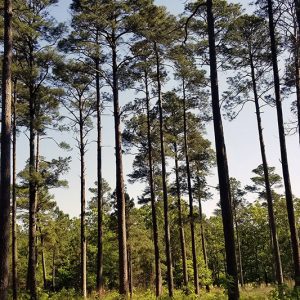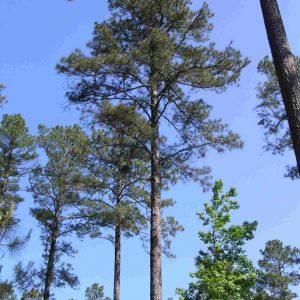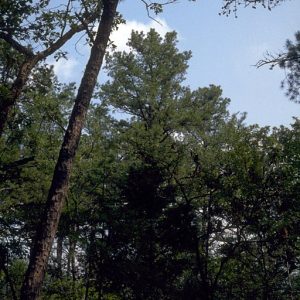calsfoundation@cals.org
Official State Tree
aka: Pine Tree
House Concurrent Resolution No. 2 of 1939 designated the pine tree as Arkansas’s official state tree. The resolution, introduced by State Representative Boyd Tackett of Pike County, cited the state’s timber resources as one of its greatest sources of wealth and, notably, “one of the few renewable resources of the state.” The measure was introduced on January 11 and met no opposition, winning final approval on January 20. The resolution did not specify a particular native pine species, but reference is often made to either the southern shortleaf pine (Pinus echinata) or the loblolly pine (Pinus taeda).
Before European-American in-migration and settlement, almost all of Arkansas was forested with notable diversity. Until the maturation of Arkansas’s rail network in the late nineteenth century, timber cutting was driven by agricultural concerns or local demands for wood. Rails brought mass access to external markets, and Arkansas timber left the state at a rapid rate. By 1930, many former forest sections were effectively “logged out.” However, war production plus postwar economic and housing booms ensured good markets for pine. Depression-era forest restoration measures, public and private alike, ensured future supplies of salable logs: by 1951, pine growth exceeded annual removals by some thirteen percent.
As of 1995, seventeen percent of Arkansas’s forests were in naturally seeded pine; another ten percent were effectively monocultural pine plantations. In that same year, out of 10.7 billion live forest trees of sapling size and larger (one inch in stem thickness and larger), 2.4 billion were pine. A 2005 assessment revealed more than 5 million acres of pine (both loblolly and shortleaf yellow) and mixed-pine forest in Arkansas.
For additional information:
American Communities: A Forest-Products Community, Crossett, Arkansas. Boston: Allyn and Bacon, 1970.
Arkansas Forests: Move Ahead. Little Rock: Arkansas Resources and Development Commission, 1946.
Brown, Harry Philip. Commercial Timbers of the United States: Their Structure, Identification, Properties, and Uses. New York: McGraw-Hill, 1940.
Forests of the South. Montgomery, AL: Southern Forest Based Economic Development Council, 1995.
Gray, John. “Arkansas Forest History.” Arkansas Forestry Association. https://www.arkforests.org/page/foresthistory (accessed May 30, 2023).
Hunter, Carl G. Trees, Shrubs, and Vines of Arkansas. Little Rock: Ozark Society Foundation, 2004.
Ogle, Jennifer, Theo Witsell, and Johnnie Gentry. Trees, Shrubs, and Woody Vines of Arkansas. Little Rock: Ozark Society Foundation, 2021.
Snyder, Josh. “Arkansas State Tree Faces Mysterious Foe.” Arkansas Democrat-Gazette, May 30, 2023, pp. 1A, 2A. Online at https://www.arkansasonline.com/news/2023/may/30/a-forestry-mystery-whats-attacking-arkansas-state/ (accessed May 30, 2023).
Turner, Lewis M. Trees of Arkansas. Fayetteville: Extension Service, College of Agriculture, University of Arkansas, 1937.
Ware, David. It’s Official! The Real Stories behind Arkansas’s State Symbols. 2nd ed. Little Rock: Butler Center Books, 2017.
David Ware
Arkansas Secretary of State’s Office









Comments
No comments on this entry yet.